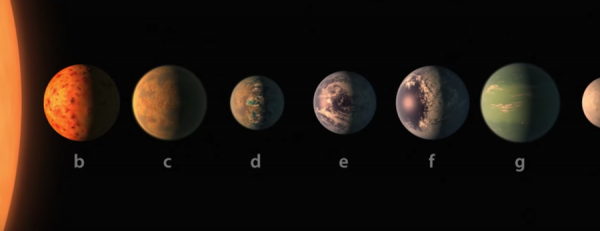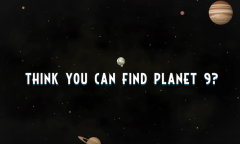By Vishal Goel, | February 23, 2017

Seven Earth-sized planets have been observed by NASA's Spitzer Space Telescope around a tiny, nearby, ultra-cool dwarf star called TRAPPIST-1. Three of these planets are firmly in the habitable zone. (Youtube)
Seven Earth-sized planets have been observed by NASA's Spitzer Space Telescope around a tiny, nearby, ultra-cool dwarf star called TRAPPIST-1. Three of these planets are firmly in the habitable zone.
NASA has discovered a solar system with seven Earth-like planets that could possibly support life. Forty light years away in the constellation Aquarius, three of the planets are in the "habitable zone" where liquid water and possibly life might exist, researchers said. This is the first time so many Earth-sized planets have been found orbiting the same star.
Like Us on Facebook
The discovery, which has thrilled astronomers, has raised hopes for alien life hunting beyond the solar system with the next generation of telescopes that are due to switch on by the next decade.
The planets closely orbit around a dwarf star named Trappist-1, which makes the system a prime candidate to search for signs of life. The star, only marginally larger than Jupiter, shines with a feeble light which is about 2,000 times fainter than our sun.
Michaël Gillon, an astrophysicist at the University of Liège in Belgium, said that the star is so small and cold that the seven planets are temperate, which means that they could possibly have some liquid water or maybe life, by extension, on the surface.
While the planets are reported to have Earth-like dimensions, their sizes range from 25 percent smaller to 10 percent larger. The most striking thing is how compact the planet's orbits are - Mercury, the innermost planet in the solar system, is six times farther from the sun than the outermost seventh planet.
Scientists say that any life that gained a foothold and the capacity to look up would have a remarkable view from a Trappist-1 planet. The salmon-pink star would loom ten times larger than the sun in our sky from the fifth planet which is considered the most habitable.
The other planets would also soar overhead as their orbits required, appearing up to twice the size of the moon as seen from Earth. "It would be a beautiful show," said Amaury Triaud at the Institute of Astronomy at Cambridge University.
The researchers hope to find out whether there is life on the planets within a decade, said Amaury. He further added that they have made a crucial step in finding out about alien life and if life managed to thrive and releases gases in a similar way as on Earth, they "will know".
-
Use of Coronavirus Pandemic Drones Raises Privacy Concerns: Drones Spread Fear, Local Officials Say

-
Coronavirus Hampers The Delivery Of Lockheed Martin F-35 Stealth Fighters For 2020

-
Instagram Speeds Up Plans to Add Account Memorialization Feature Due to COVID-19 Deaths

-
NASA: Perseverance Plans to Bring 'Mars Rock' to Earth in 2031

-
600 Dead And 3,000 In The Hospital as Iranians Believed Drinking High-Concentrations of Alcohol Can Cure The Coronavirus

-
600 Dead And 3,000 In The Hospital as Iranians Believed Drinking High-Concentrations of Alcohol Can Cure The Coronavirus

-
COVID-19: Doctors, Nurses Use Virtual Reality to Learn New Skills in Treating Coronavirus Patients











